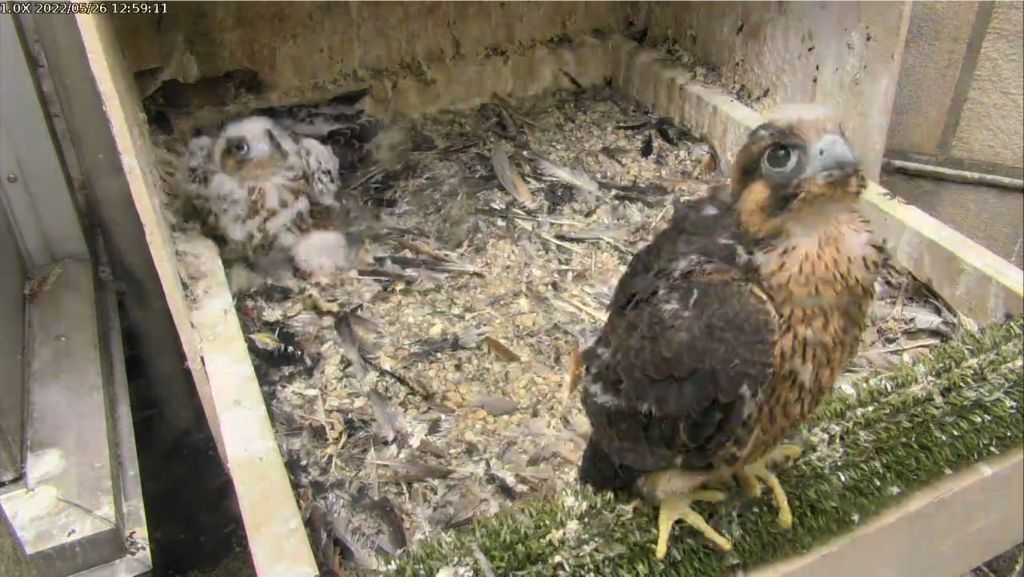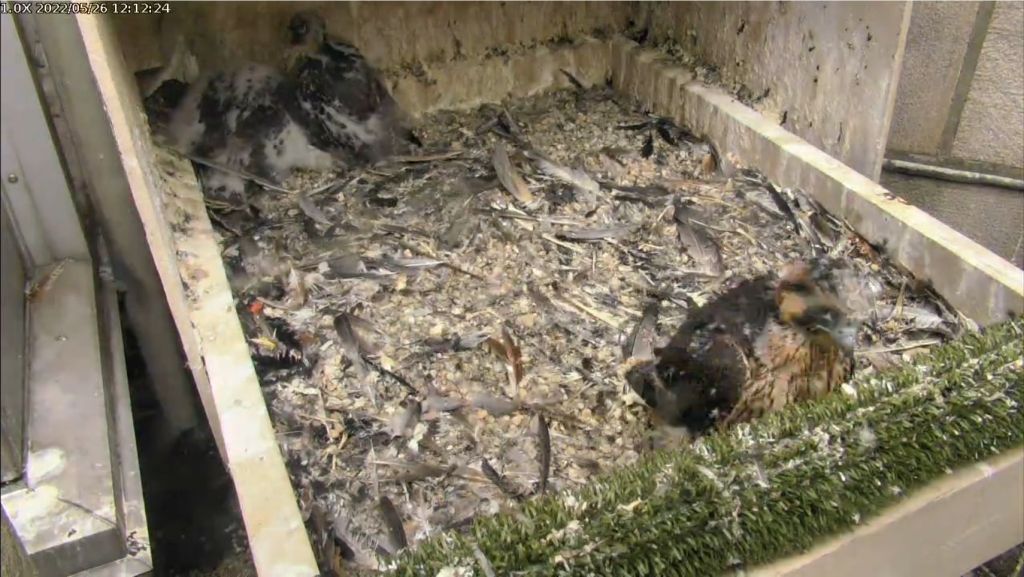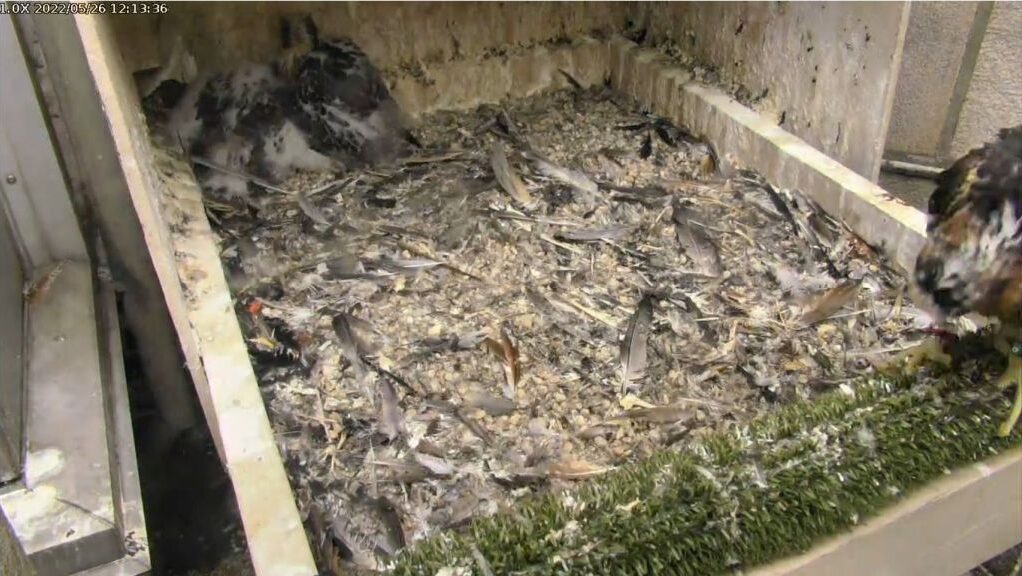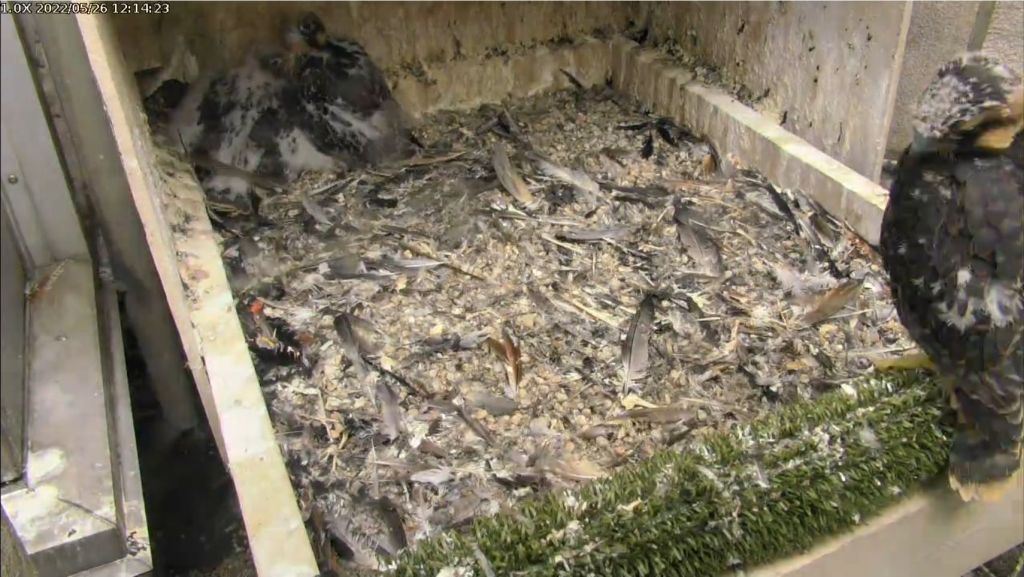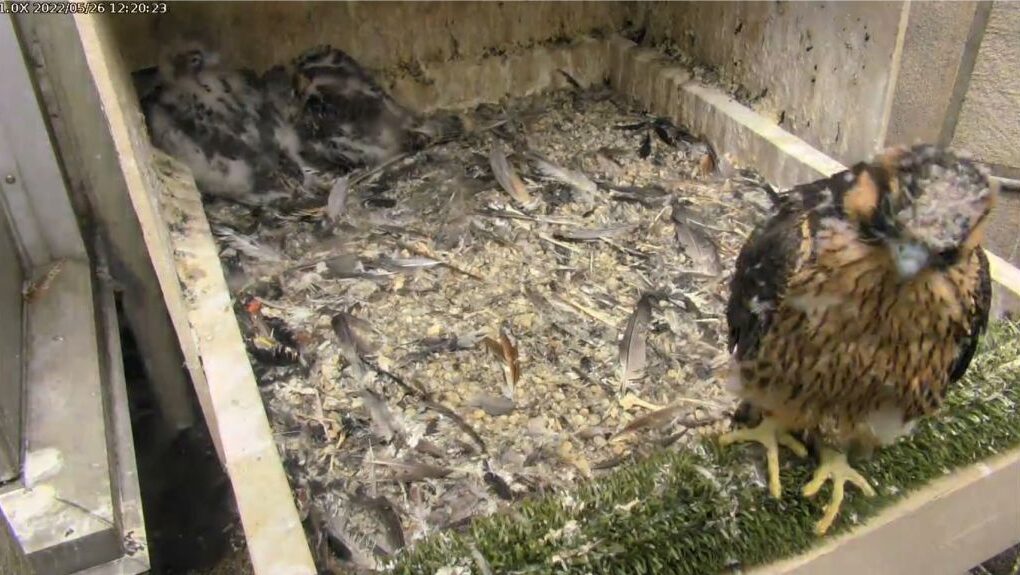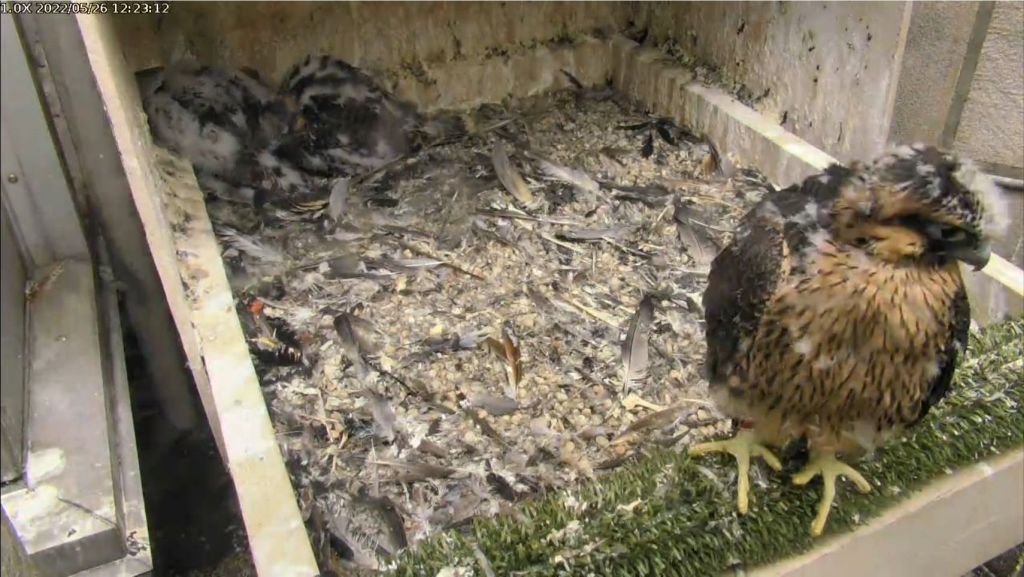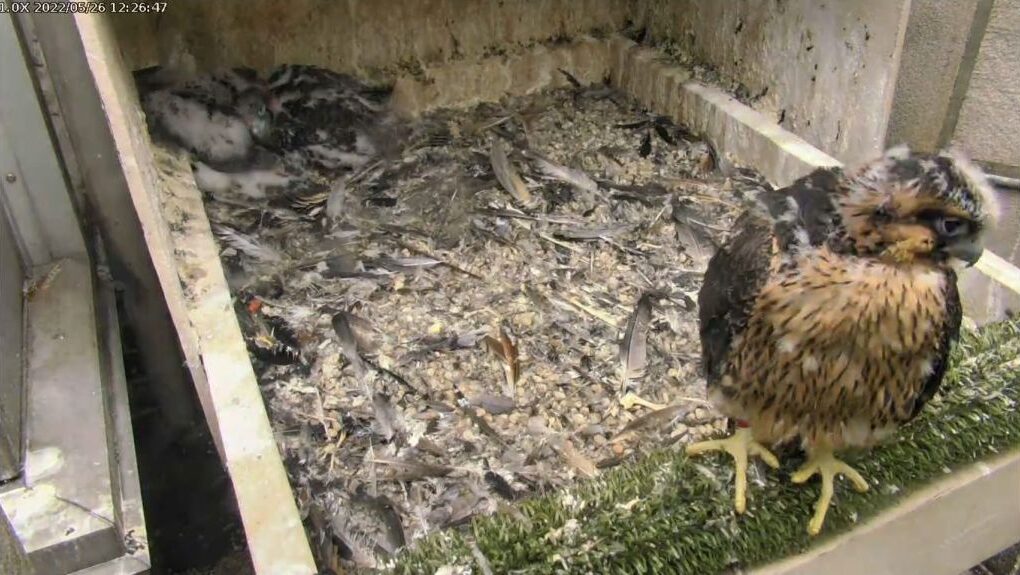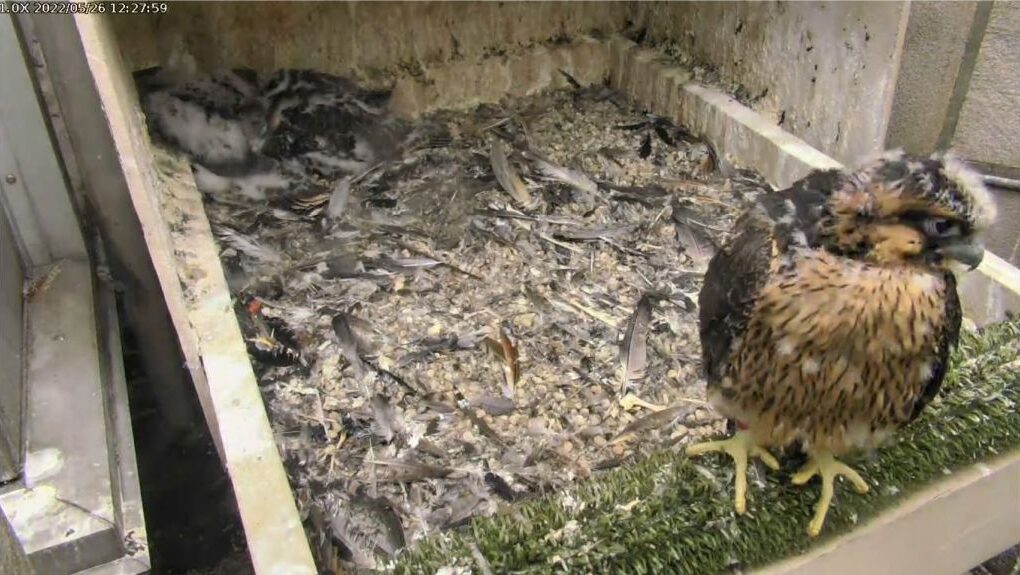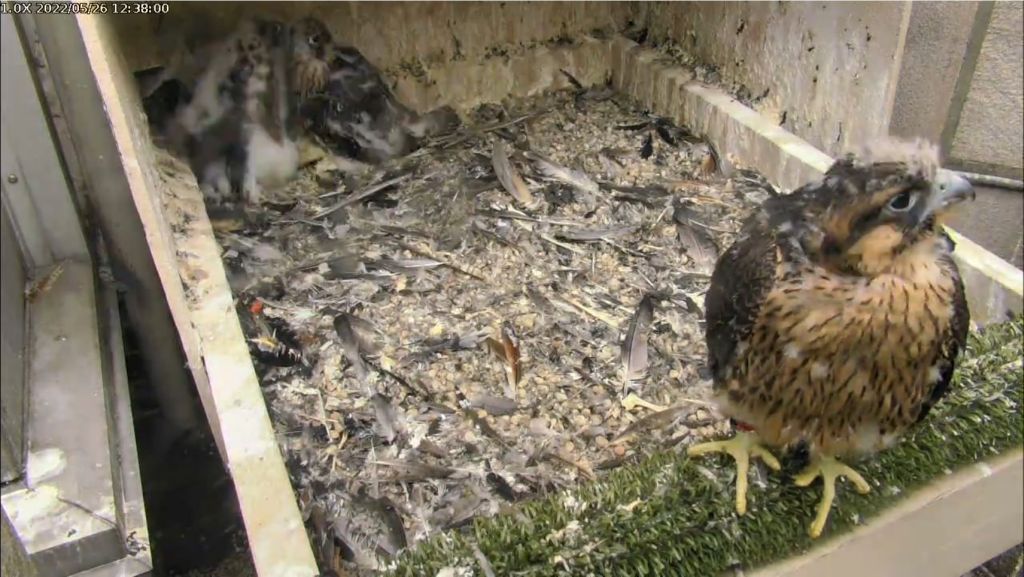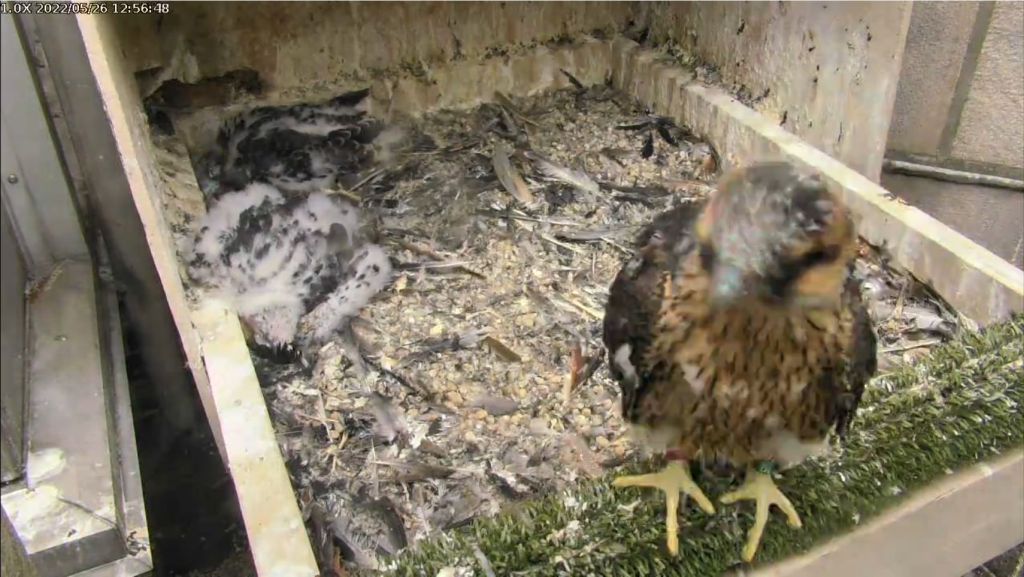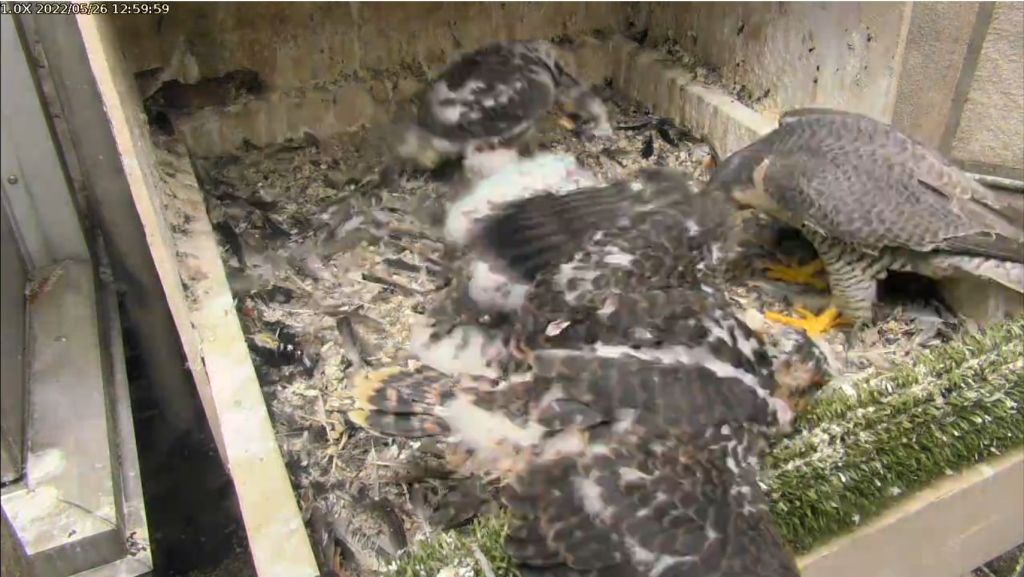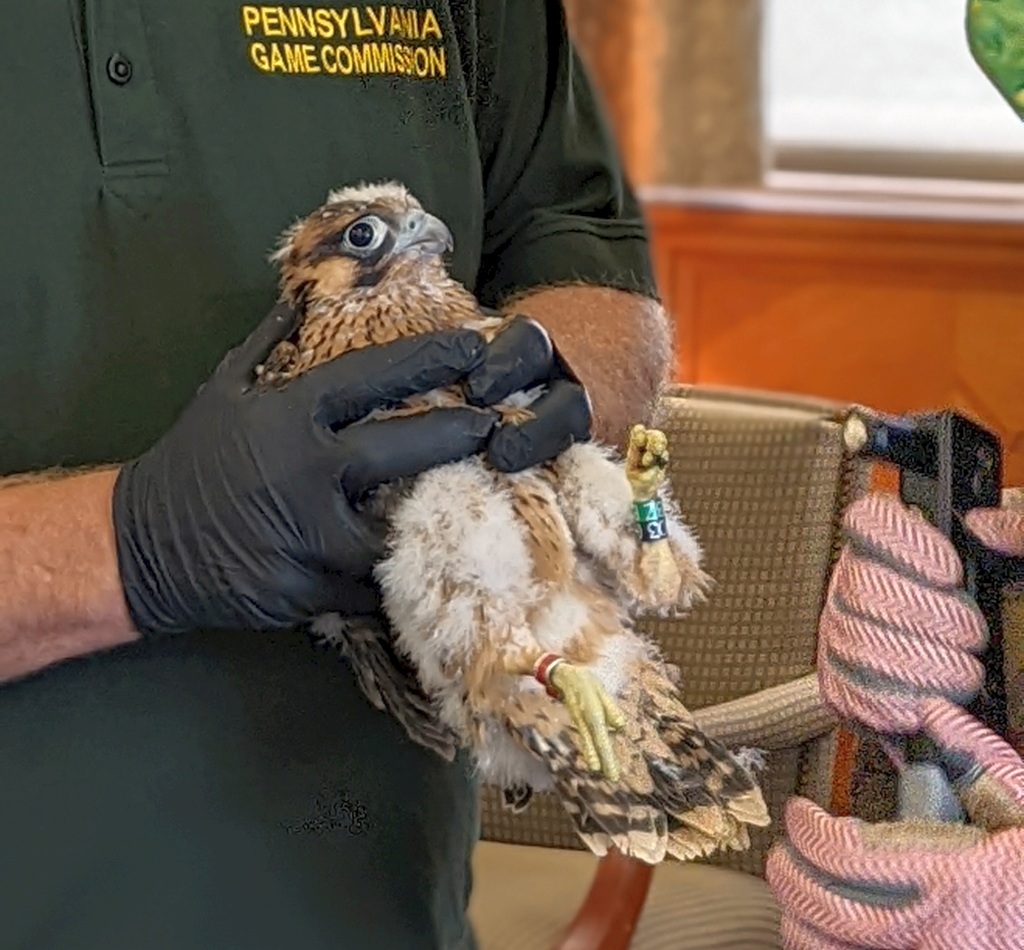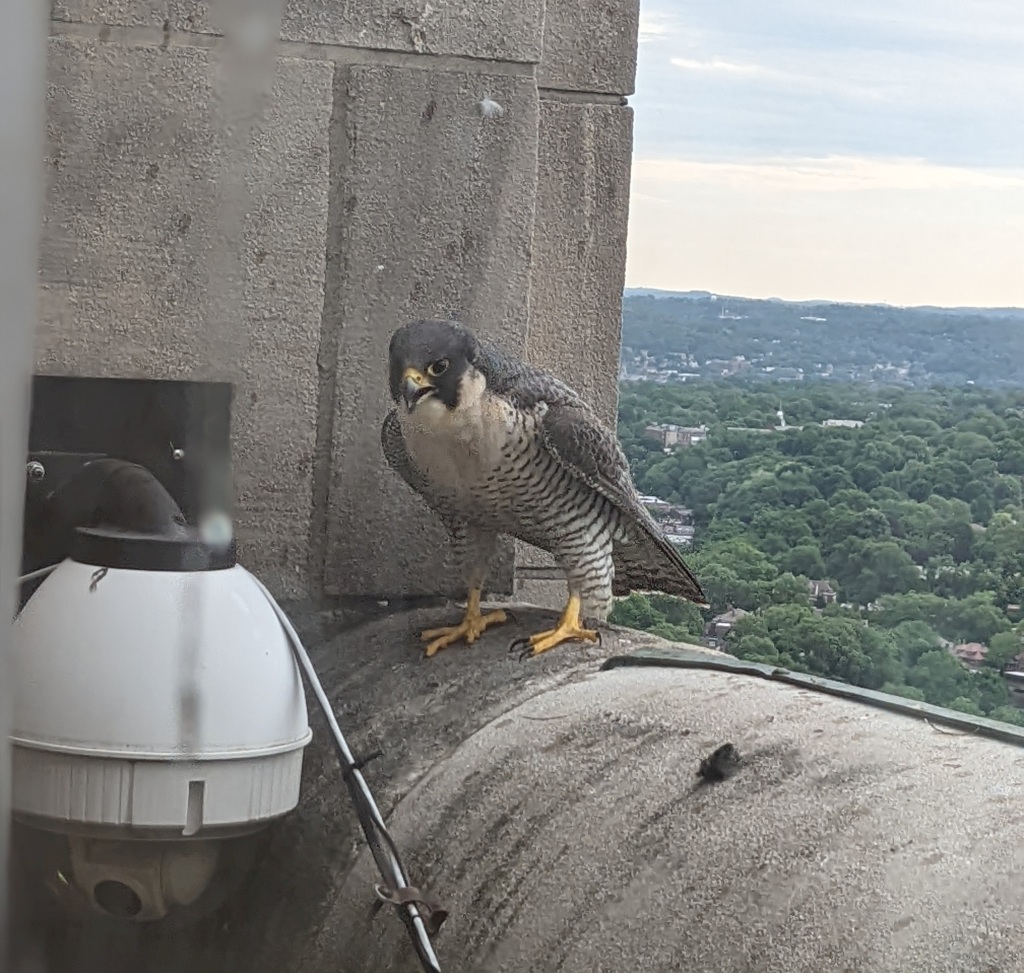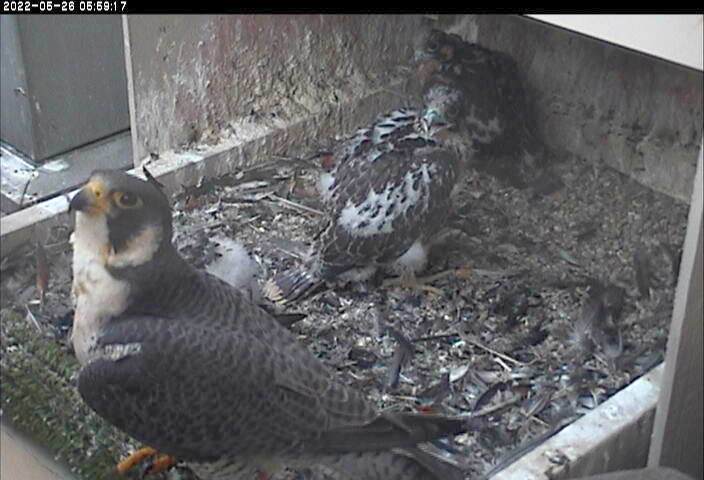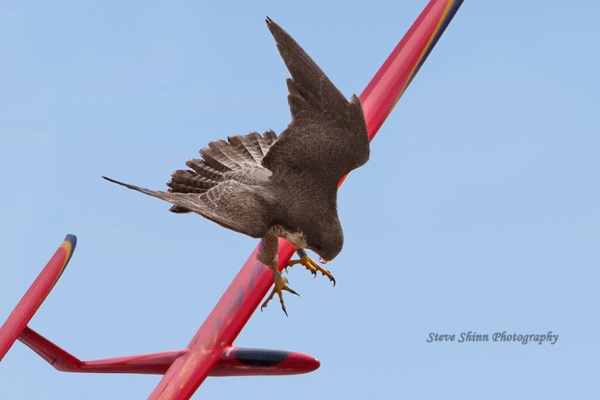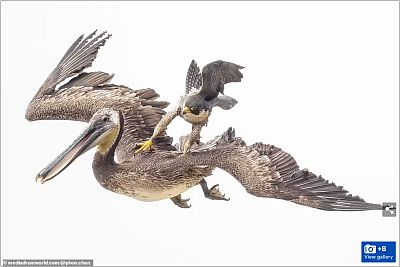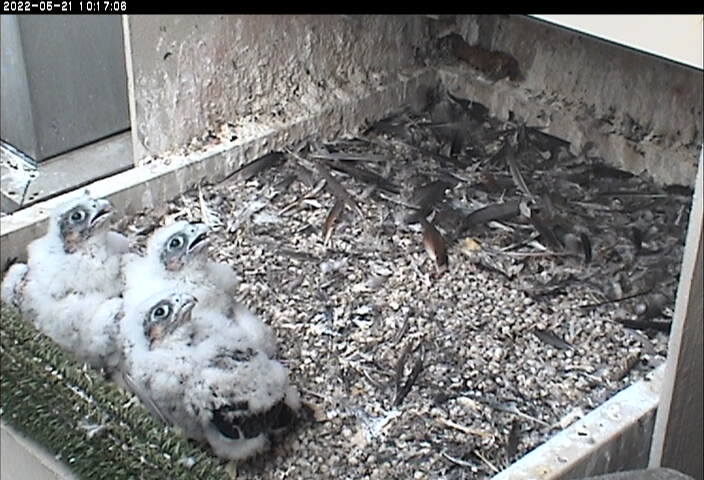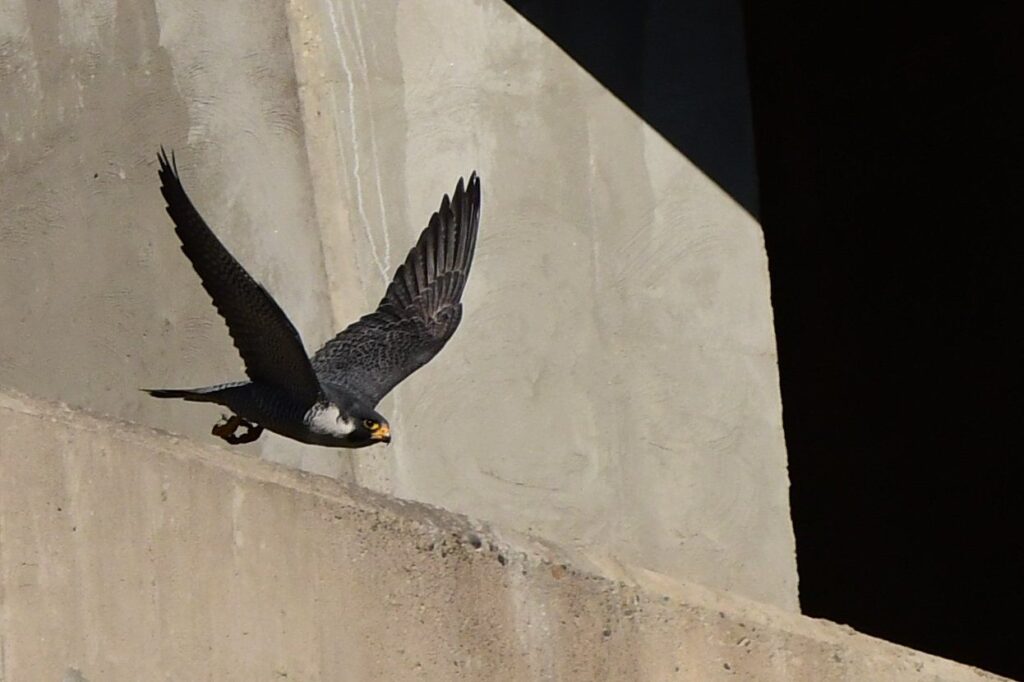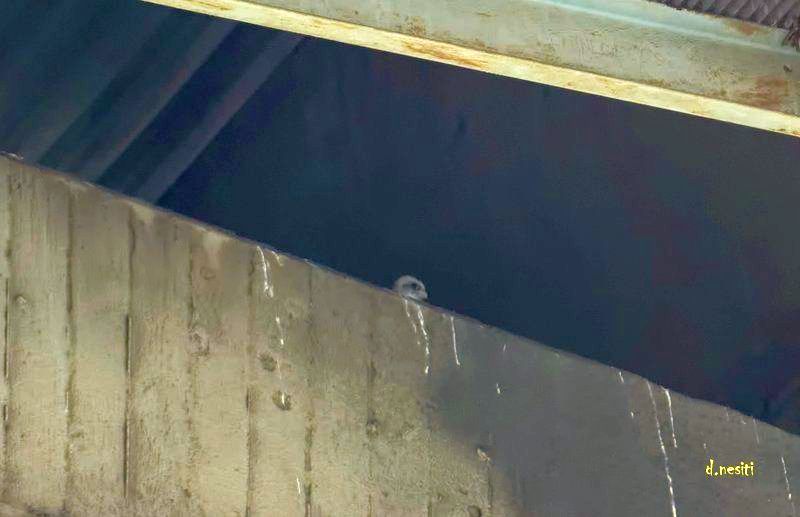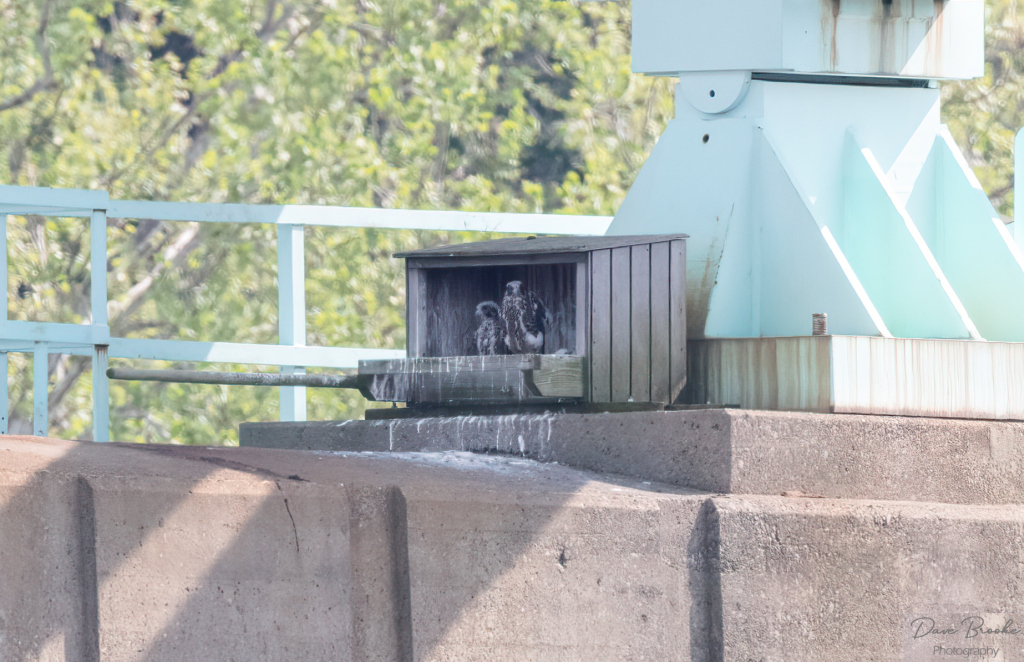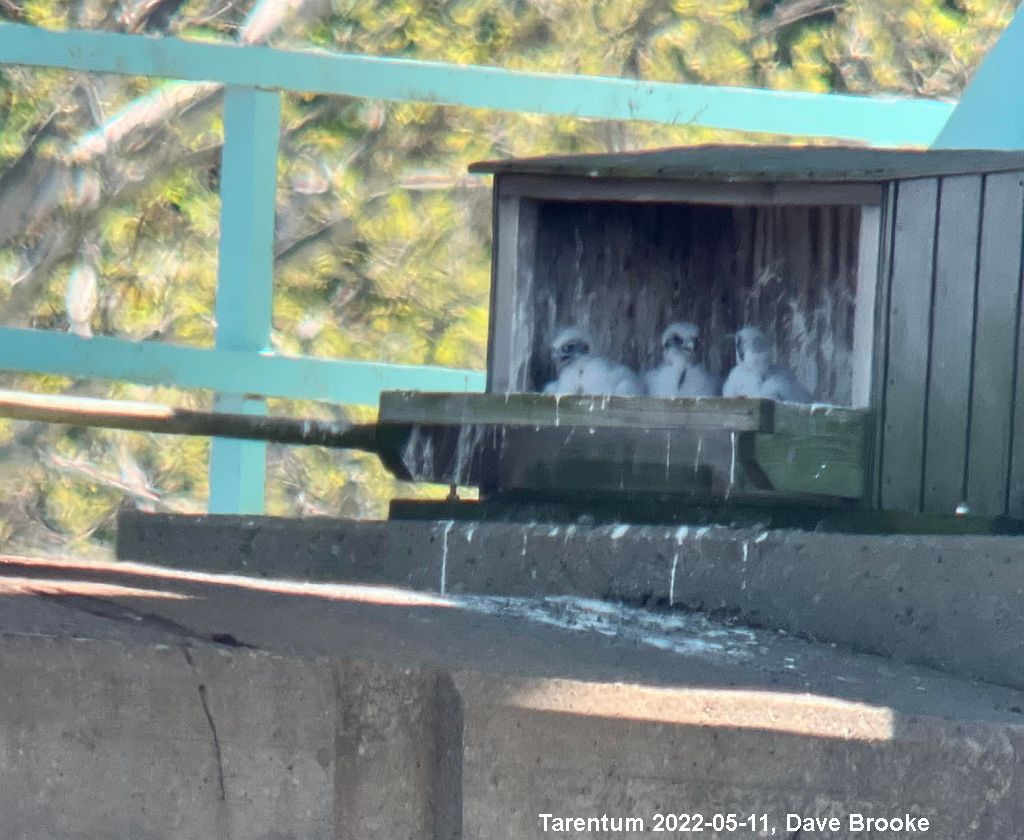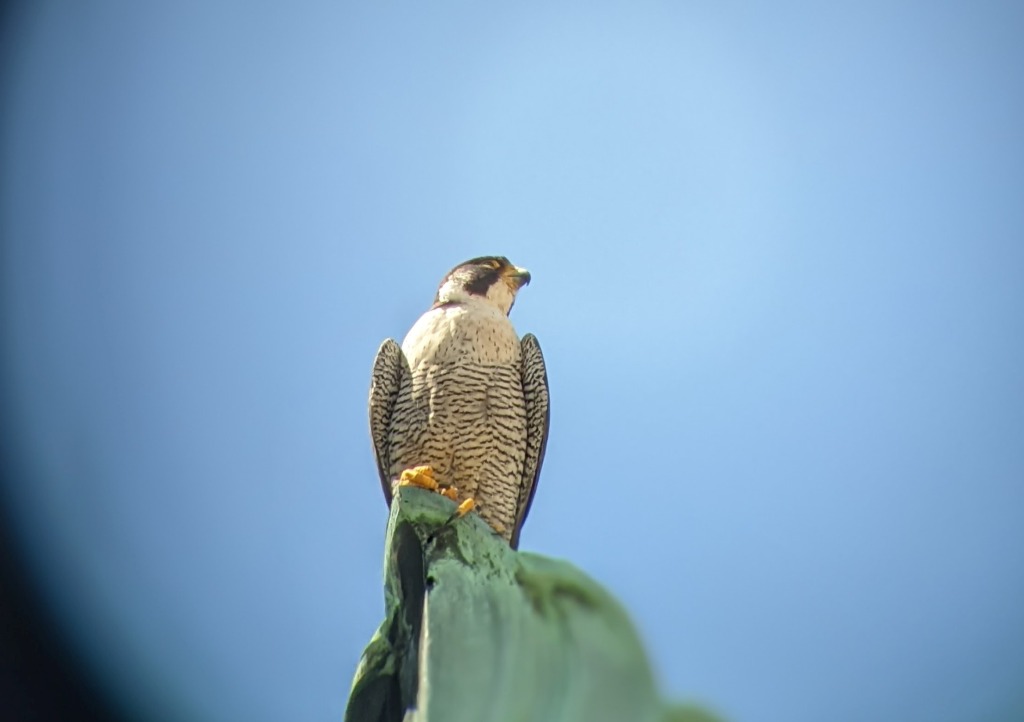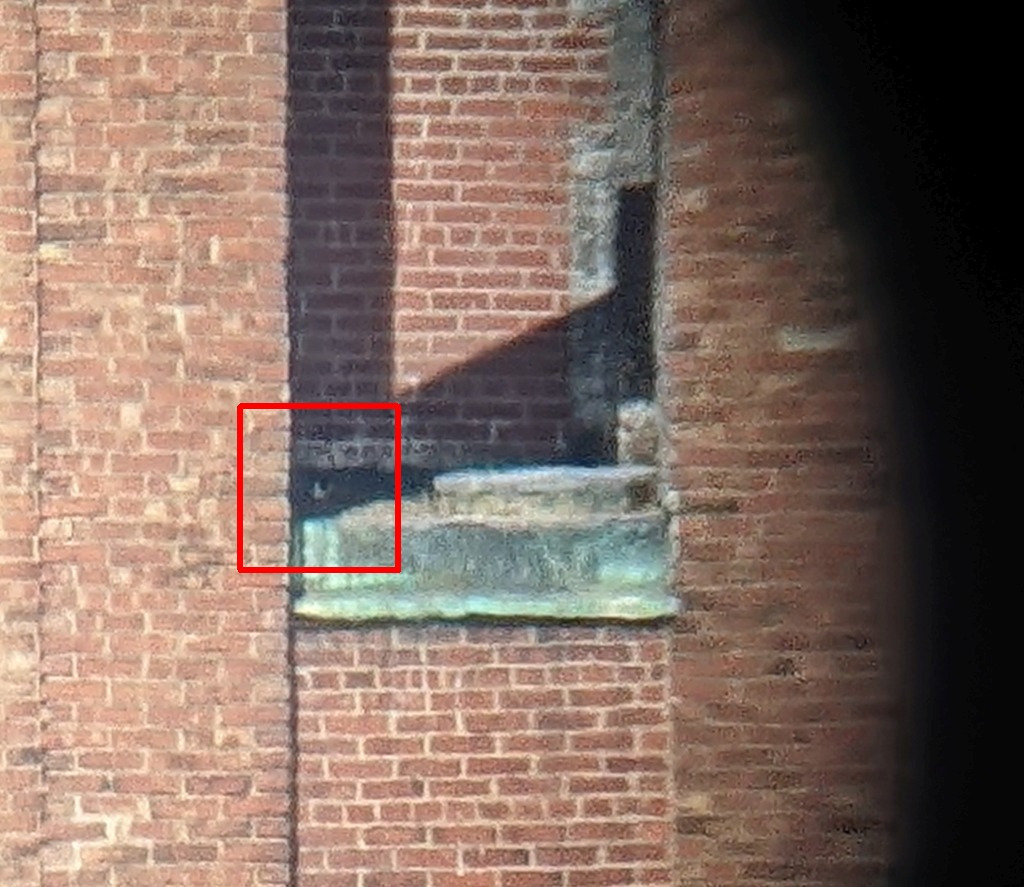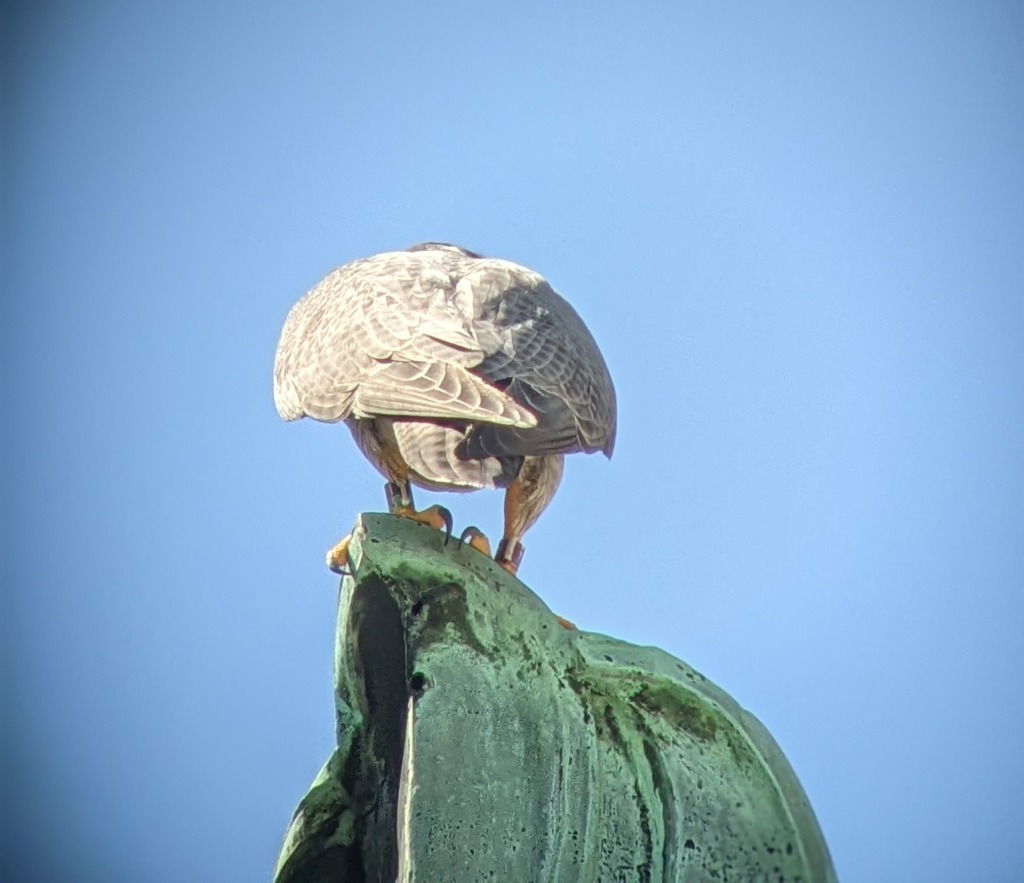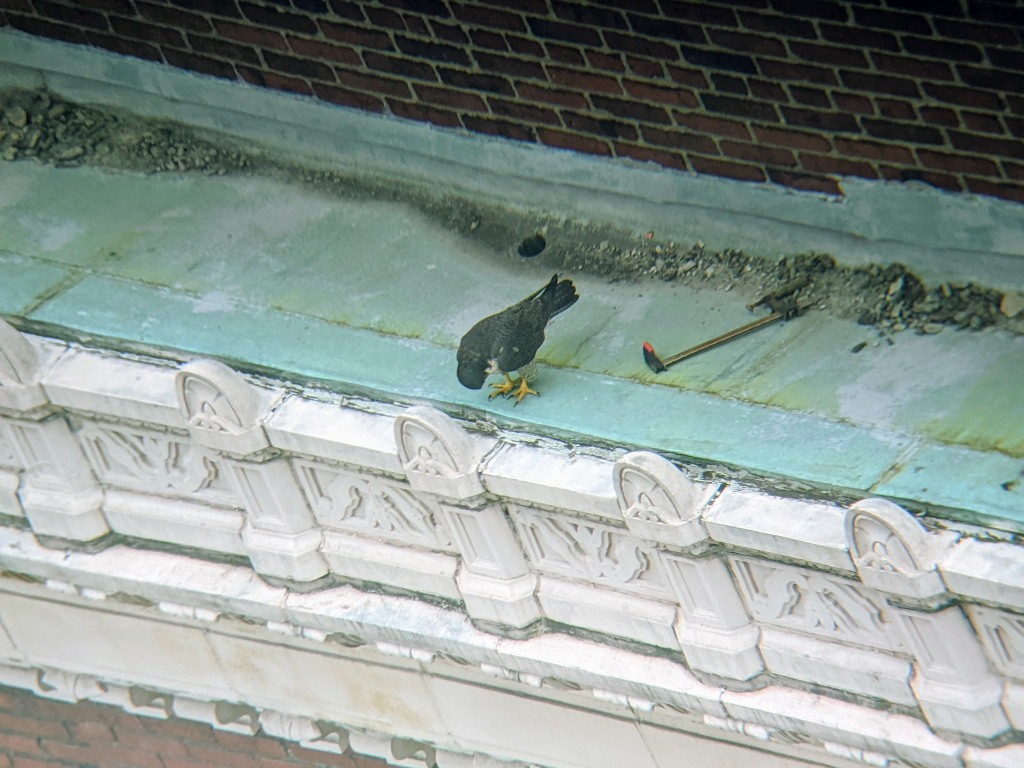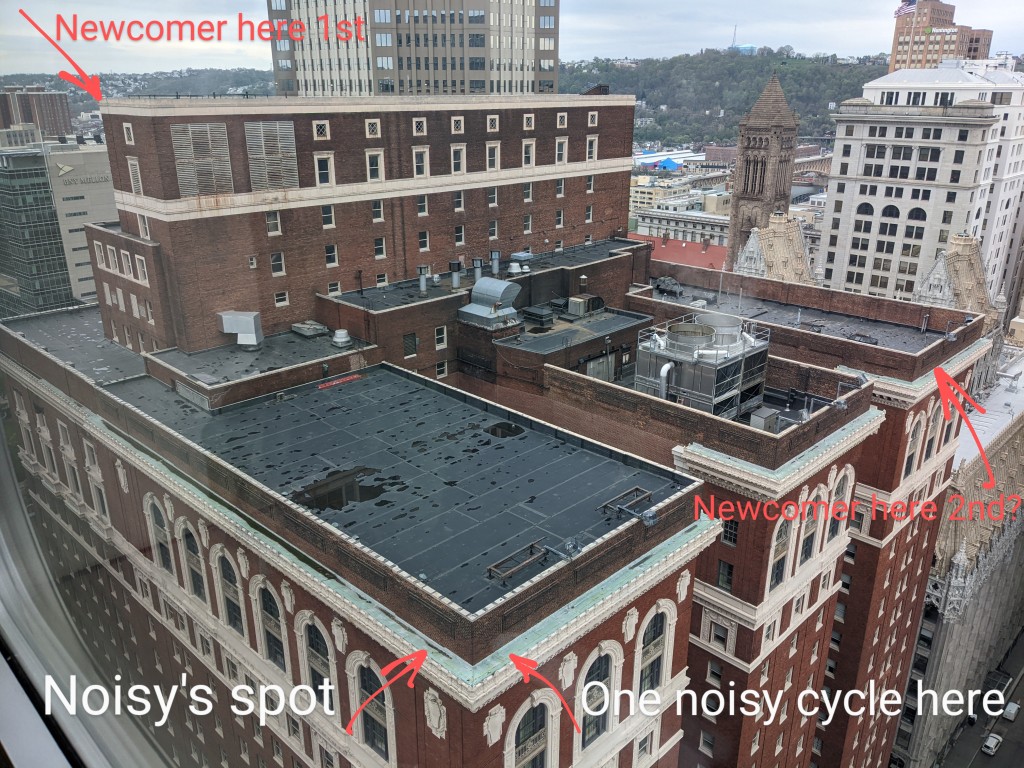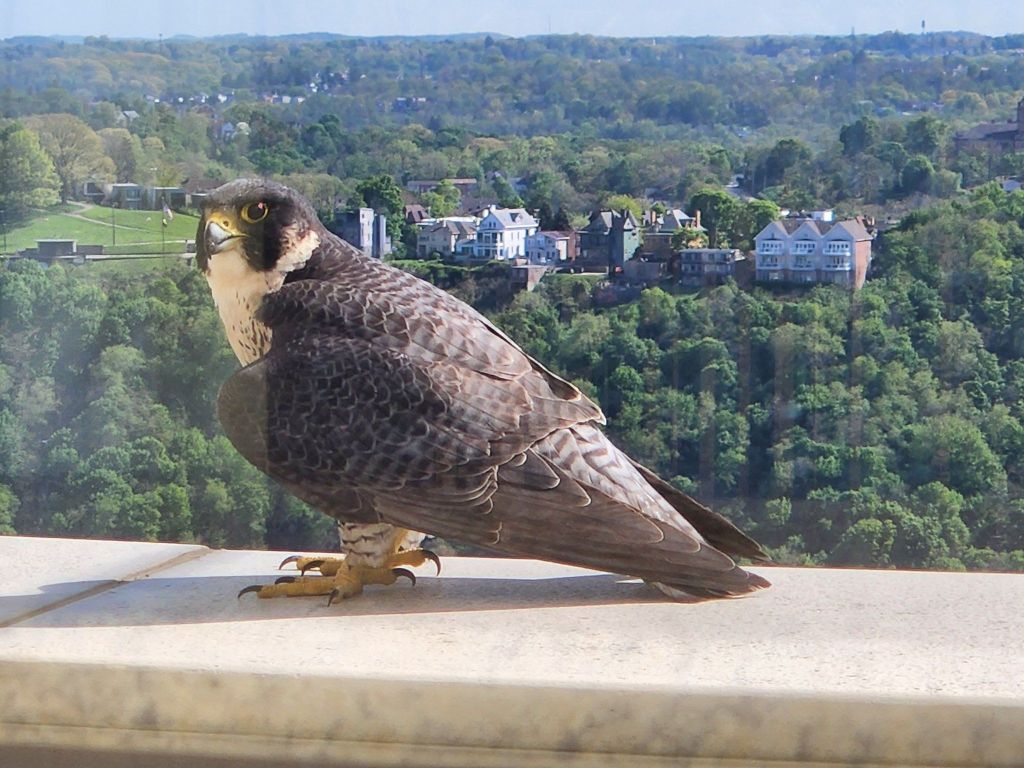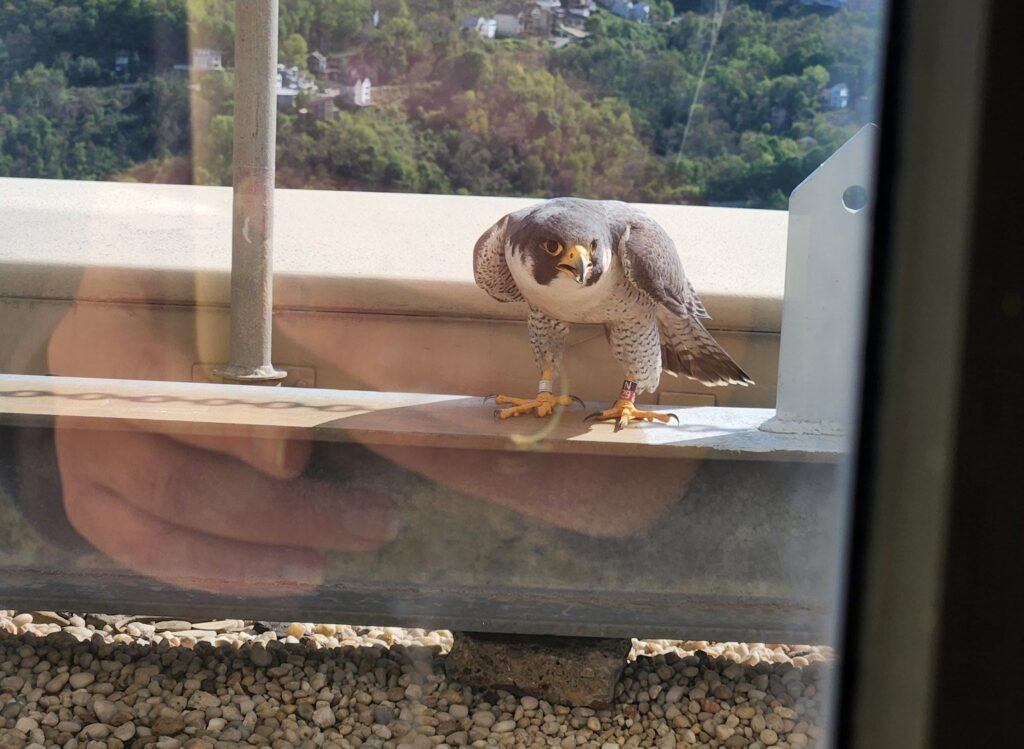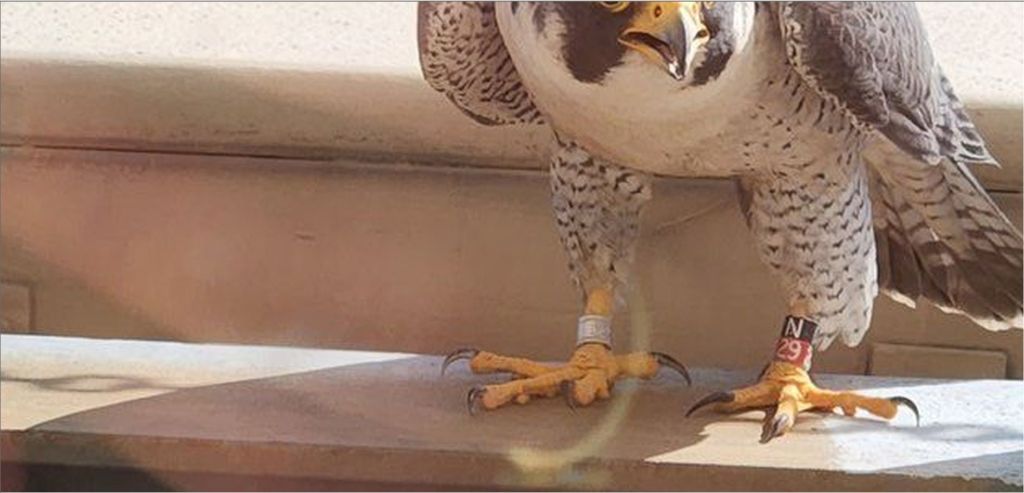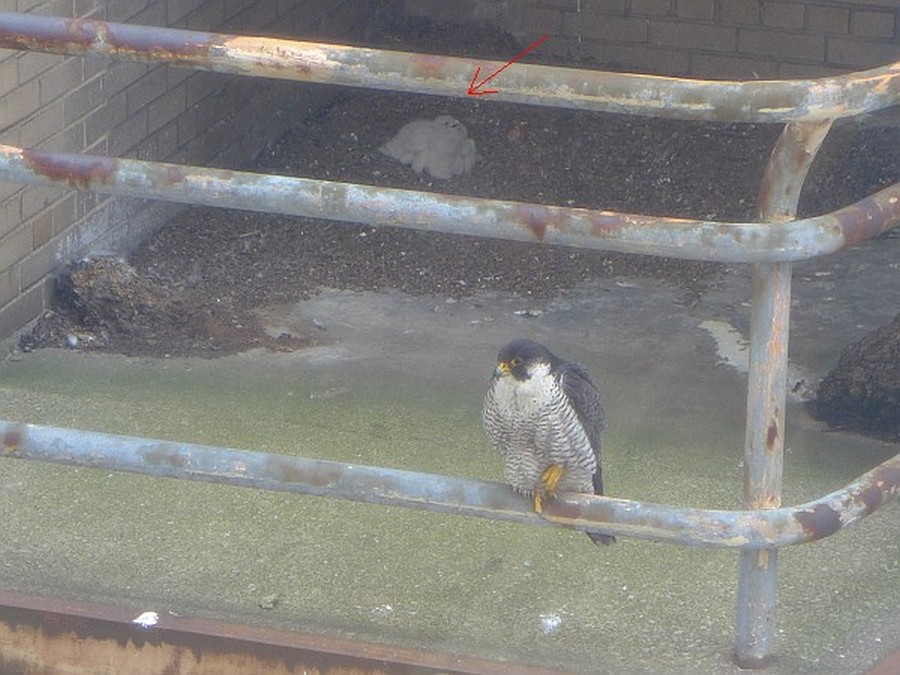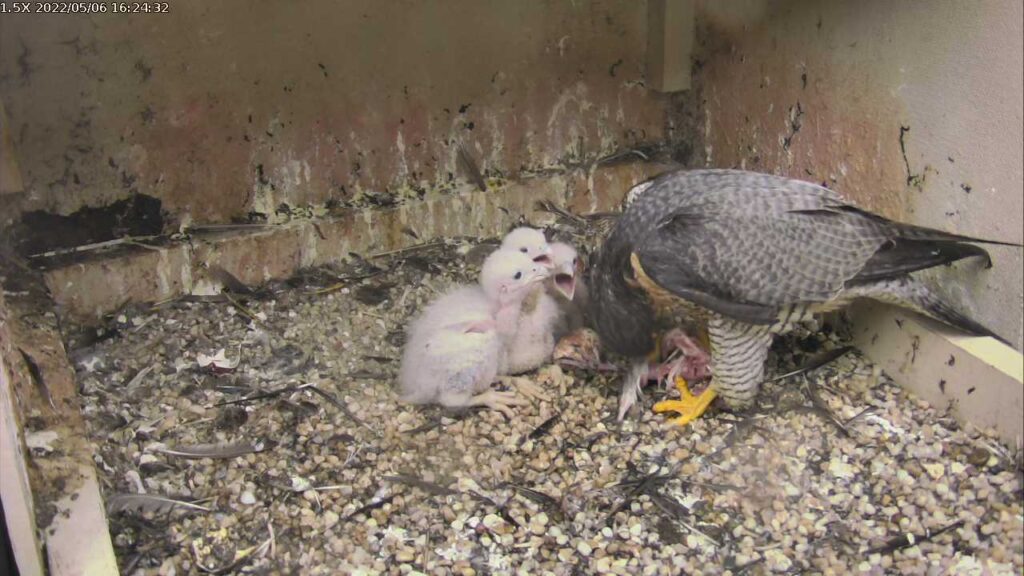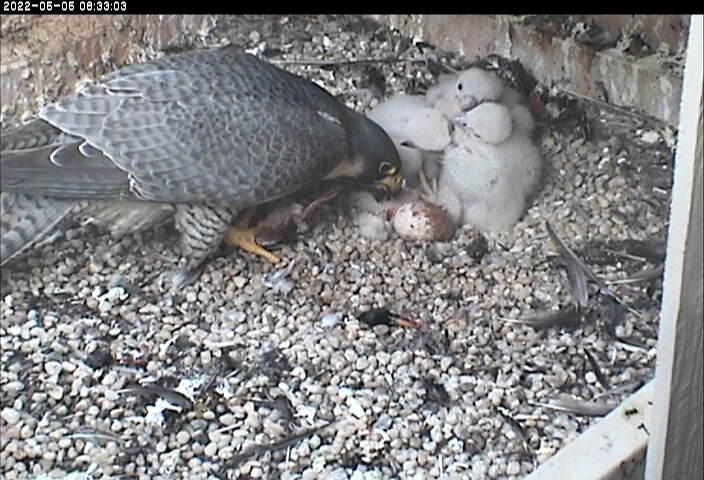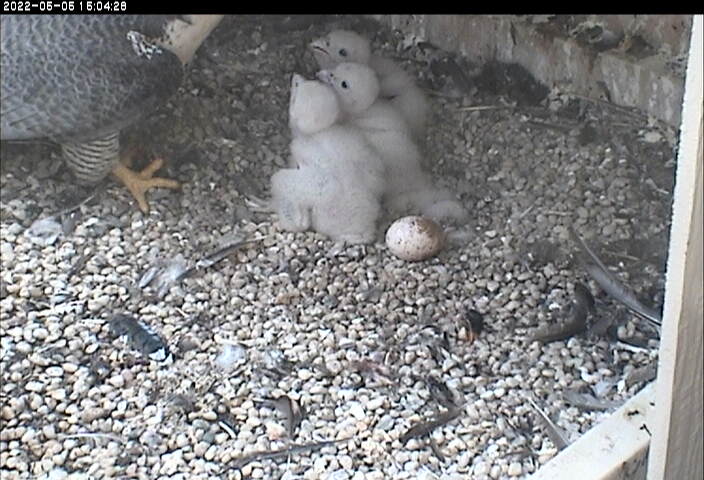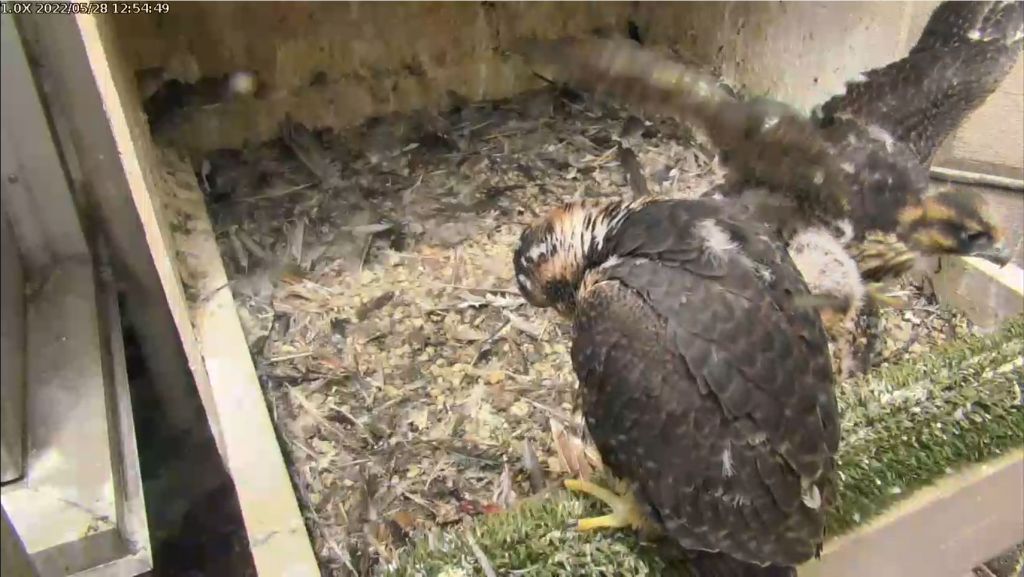
29 May 2022
It happens every few years. At 28-35 days old, one of the Pitt peregrine chicks stumbles off the nest into the gully below and disappears from camera view. People are worried. The chick is fine.
Yesterday at 12:55pm Yellow Girl was so excited to hop on the green perch that she flapped and ran from the back of the box. She made it! But she was wobbly. (yellow tape on band at right)
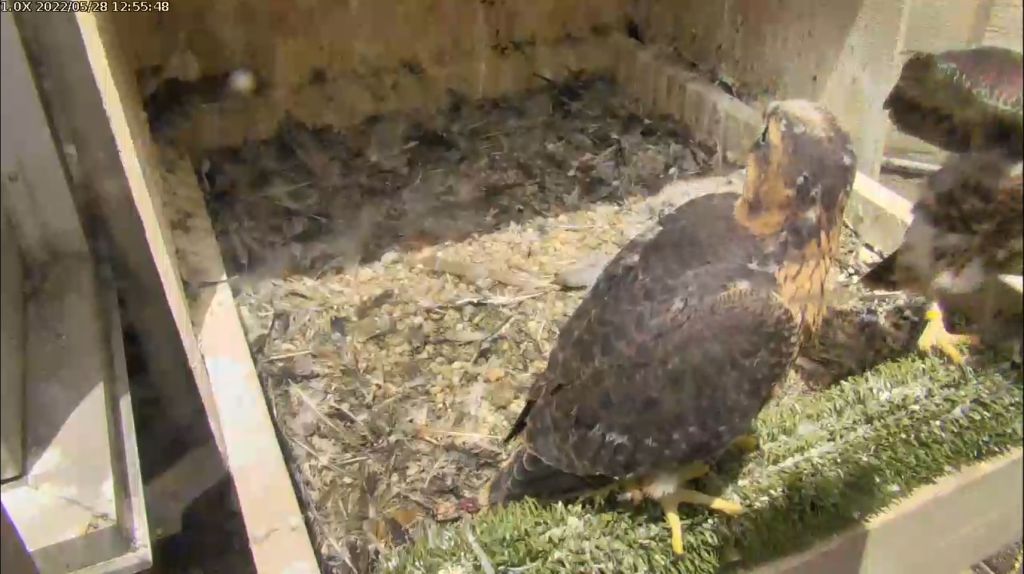
Rather than pause to get her bearings she flapped some more. It didn’t help. Her right foot slipped and then her left. She grabbed with her talons … and slid off to the gully.
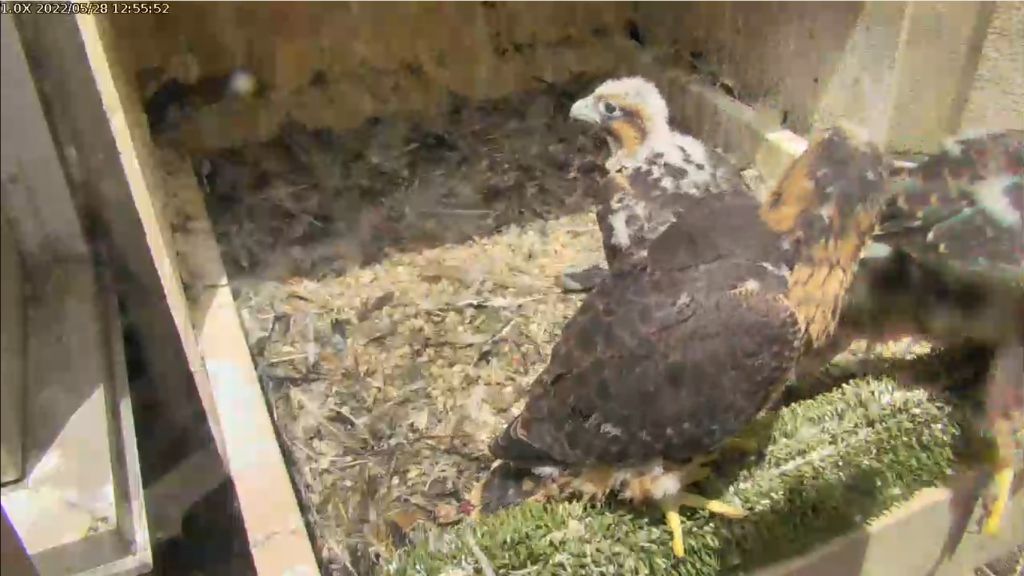
The video clip below shows the entire episode. One of the adults — probably Morela — was babysitting at the time and saw the problem unfolding. She whined and flew over the nest (shadow passes over). Adult peregrine whining means “I want [something] to be different.” Maybe that [something] was “Don’t do that! Be careful!”
Yellow Girl was still excited, though. She hissy-whined (begging for food), flapped and … Whoops!
The other two chicks ran to the back wall. Off camera we can hear Yellow Girl hissy-whining from below and Morela answering from above.
As in prior years the chick down under will resurface eventually. Sometimes the parents use food to entice the youngster to climb up. Sometimes they feed the chick down below. In any case, Yellow Girl will come topside before she flies.
For a diagram of the area below the nest and a video of a chick returning, check out this vintage article. It’s worth seeing the look on his siblings’ faces when the down-under chick reappears!
p.s. The blue tape on the second female’s band came off in the first day so her band is plain silver. So their nicknames are: Red Boy, Yellow Girl, Silver Girl
(photos and video from the National Aviary falconcam at Univ of Pittsburgh)
